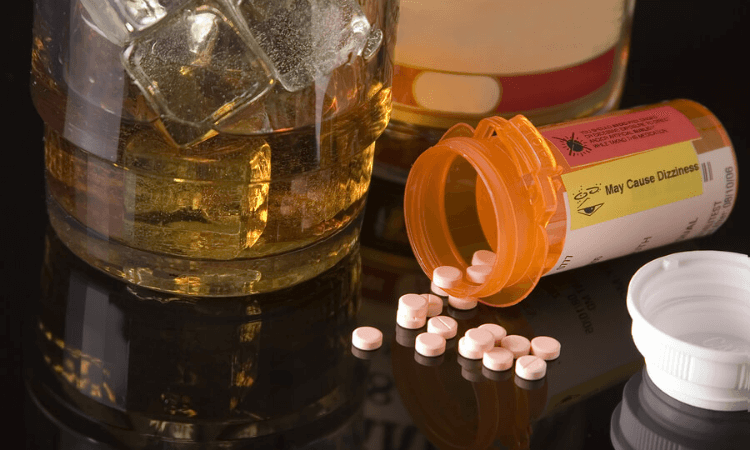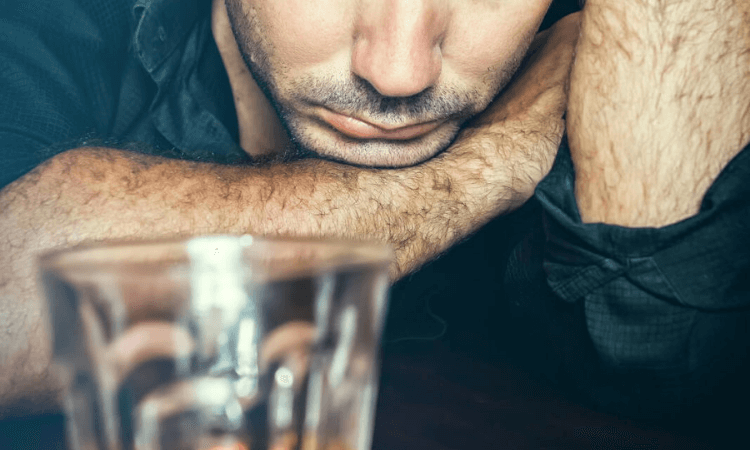
Health Risks of Combining Ritalin and Alcohol – Like most potentially intoxicating substances, Ritalin and alcohol both have risks associated with their use. When Ritalin is used as directed by a physician, the chances of severe side effects are slim—the same can be said for moderate drinking. When these substances are combined, however, the chances of encountering adverse effects increase exponentially.
What Is Ritalin?
Ritalin is a prescription stimulant drug that contains the active ingredient methylphenidate used to treat symptoms of attention-deficit hyperactivity disorder (ADHD). ADHD is characterized by difficulty with focus and sometimes problems with impulsivity. While mild versions of these symptoms are common among children, those with ADHD experience more severe symptoms, tend to be hyperactive, and, if left untreated, often do not grow out of this behavior as they get older.
Ritalin Abuse
Ritalin is commonly abused for its stimulant effects, which include increased focus and alertness, decreased appetite, and intense feelings of well-being. When Ritalin is abused, it is often not obtained through lawful means.
Relatively few people who have ADHD and have legitimate prescriptions for it engage in misuse. In fact, the effects of Ritalin on people who have ADHD are different than those who do not have the disorder.
Instead, those who abuse Ritalin often obtain the substance from friends or family members with prescriptions buy buying them or stealing them. In some cases, people may visit doctors and falsify symptoms of ADHD to obtain prescriptions. Ritalin can also be purchased on the black market.
Ritalin abuse is most often seen among teens and young adults, and ADHD drugs, such as Ritalin, Adderall, and Modafinil, are commonly referred to as “smart drugs.” Students believe that the drug can increase attention and focus, thus allowing them to stay up all night cramming for a test or to finish a paper. Despite this popular belief, statistics suggest that those who abuse Ritalin and other prescription stimulants, for this reason, tend to perform less well academically than those who don’t use them.
Ritalin is not considered addictive when taken in the prescribed amount as directed. However, when a user increases the dosage or uses other forms of administration (e.g., crushing and snorting), the potential for addiction increases. Also, the addictive potential rises if a person who doesn’t have a legitimate medical need uses the drug for recreational purposes.
Alcohol Abuse

Although alcohol is legal for purchase and use among people 21 and older in the U.S., it can have harmful effects on the brain. Effects include the following: changes in mood and behavior, reduced inhibitions, confusion, and motor function impairments.
Long-term, excessive abuse of alcohol can have severe effects on the body and result in a variety of health conditions, including the following:
- Stroke
- Liver disease
- Pancreatitis
- Irregular heartbeat (arrhythmia)
- Increased blood pressure
- Increased risk of several forms of cancer
An alcohol use disorder (AUD) is described as any type of problematic drinking, or when drinking affects a person’s life in adverse ways. This problem can range from binge drinking to full-blown alcoholism and physical dependence. According to the National Institute on Alcohol Abuse and Alcoholism (NIAAA), at least 15 million adults suffer from an AUD, and more than 80,000 people die each year from alcohol-related causes.
Combining Ritalin and Alcohol
It is not safe to mix Ritalin and alcohol under any circumstances. Despite this, it is not uncommon for recreational users to combine the two because Ritalin is a stimulant and alcohol is a depressant. Users may do so as a means to counteract the unwanted effects of either substance. For example, a person may use Ritalin to offset the depressant or sedative effects of alcohol, and this may allow him or her to party for longer and drink more.
Combining these two substances can lead to unpredictable effects, such as an increase in heart rate to dangerous levels and high blood pressure. Problems with irregular sleeping patterns and mood swings can develop from mixing Ritalin and alcohol as well. Some users of both substances also experience an increase in anxiety, which can drive further self-medication and perpetuate an increasingly dangerous and burdensome cycle of drug abuse.
Because Ritalin’s stimulant properties can counteract some of the effects of alcohol, this can lead to overdrinking to perilous levels and result in alcohol poisoning. Acute alcohol poisoning is life-threatening and can also cause other severe health complications. In addition, drinking alcohol can cause more Ritalin to be released into the bloodstream, and this higher concentration can quickly lead to dependence as the body adapts to the presence of higher amounts of the stimulant.
Once physical dependence develops, withdrawal symptoms will occur when the person tries to quit using the substance. The same level of physical dependence can also quickly develop with long-term alcohol abuse. In cases of dependence on more than one substance, withdrawal is more complicated, and medical supervision is always required.
According to the Food and Drug Administration (FDA), health providers should be cautious about prescribing Ritalin to any person who also has a history of substance abuse, including alcohol. Substance abuse tendencies can lead to the overuse of drugs, such as Ritalin, as well as an increased tolerance for it.
Long-Term Effects of Ritalin and Alcohol

While the short-term effects of combining Ritalin and alcohol are certainly significant, there are also chronic problems that can manifest as a result of co-occurring abuse. Nutritional deficits are common, as Ritalin often suppresses appetite and alcoholics often have deficiencies in key nutrients, such as thiamine. Liver disease can also occur mostly due to the consumption of alcohol and its damaging effects.
A loss of energy is also common for those abusing these substances, which can encourage a person to increase their consumption of Ritalin or other stimulants in an effort to combat fatigue and lethargy. Agitation, irritability, and erratic sleep patterns can also be encountered by those who mix Ritalin and alcohol.
Depression is another potential long-term effect of using both Ritalin and alcohol. Depression is a remarkably common and troublesome symptom of addiction, and it can contribute to further substance abuse. The link between depression and substance abuse has been well-documented, and this particular drug combination is not immune to it.
Treatment for Polysubstance Abuse
Ritalin and alcohol are both common substances of abuse and can be very dangerous even when abused alone. However, mixing these two substances places an individual at higher risk for dangerous complications, both in the short- and long-term.
Ritalin’s pervasiveness among young adults makes this combination particularly dangerous, as underage persons and binge-drinkers are among those at highest risk for alcohol poisoning. Ritalin’s capacity to mask the immediate effects of alcohol can also lead to the consumption of a dangerous amount, thus contributing to an overdose of either or both substances.
The abuse of Ritalin, alcohol, or multiple substances should be treated seriously. Professional treatment that includes evidence-based services, such as psychotherapy and drug counseling, is needed to address polysubstance abuse and co-occurring conditions, such as anxiety or depression.
Recovery in Tune offers comprehensive addiction treatment programs that can help those who are suffering from addiction begin their journey to recovery. If you or someone you love is abusing Ritalin, alcohol, or other substances, call us today to discuss treatment options!